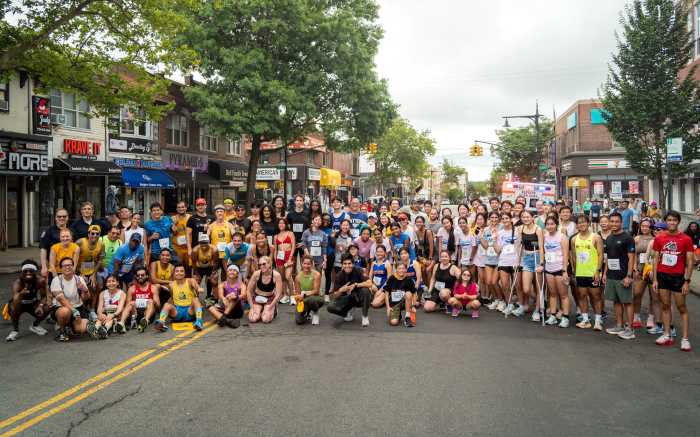
Did you know that New York State is in the middle of the couple-month period during which most of the state’s big ticket agenda items are debated and decided? This is known as budget season. And transit advocates want you to make sure Gov. Andrew Cuomo and the State Legislature do something about the infuriating subway system during that period.
That’s what brought 21-year-old Queens native and Riders Alliance member Brian Zumba to the uptown N-Q-R-W platform at Union Square on Monday. As part of the advocacy group’s “State Budget 101” week, volunteers are planning to hit each borough except for Staten Island to distribute fliers explaining who controls the MTA (Cuomo). Also, they’ll pass out scripts straphangers can use to call Cuomo and state legislators to demand that they include “new money” to fix and fund the system.
Zumba, shouldering a retro MTA tote that he gifted himself for Christmas, paused to quietly practice his pitch: “Would you like to fix the subway? Would you like to fix the subway?” Then, he began.
Do you want to fix the subway?
It wasn’t easy. There are few truths about the subway beyond the fact that trains never arrive when you need them most. Another truth: New Yorkers are practiced at ignoring intrusions into their tolerated travels (see: this picture of a guy and what appeared to be a peacock). You really have to get into someone’s face to break through the I’m-just-trying-to-get-to-work-less-than-ten-minutes-late vibe. Zumba was having some difficulties.
Along with a partner — Rebecca Bailin, a Riders Alliance campaign manager — he tried to interest commuters in a little state budget education, or at least a petition signature, or even a simple flier.
“Do you want to fix the subway?”
“Uh, sure,” one commuter answers, but then the W came and the commuter ditched.
“Do you want to fix the subway?”
“I only take it one stop,” a man shrugs, and turned away.
“Do you want to fix the subway?”
“OK,” a woman says, cautiously taking out an earbud. The transit advocates pounced, one of their successes. The woman was not aware, it turned out, that Cuomo runs the show. She took some literature.
“The subways right now,” says Zumba, “are hanging by a thread.”
Zumba says he’s studying public affairs at Baruch College. He grew up near the 7 line and is one of those New Yorkers who always had a connection to the trains. The 7 had those windows in the front through which you could look at Manhattan’s skyscrapers approaching on the horizon. It made the subway feel like an “engine of opportunity,” Zumba says. Now with declines in service and performance, he’s worried that the engine might be “going away.”
The troubles of his beloved 7 are a good example. The line underwent years of construction to install modern signaling. But even today more work is leading to service changes — many of them hitting Queens’s immigrant working population harder, as those changes are most disruptive outside normal rush hours.
These are the types of stories and experiences — low-level seeming-unending agita — that train advocates like Zumba are hoping can become a rallying cry. The slow subway is not a state of nature. These are fixable problems, advocates like to remind people. Keep your eye on the ball.
The ball is in Albany, where Cuomo has promised to provide some new dollars for transit. One major idea is to pass a congestion pricing plan — a toll on cars and trucks in parts of Manhattan — to raise money for the MTA.
It’s an idea that might nudge drivers off congested roads, while also providing a (theoretically) dedicated funding stream for the subway. The concept is beloved by transit advocates and has been floated and dashed in various forms for decades. Over the summer, after months of horrendous subway incidents, Cuomo said, “congestion pricing is an idea whose time has come” and empaneled a task force to look at the issue.
Show me the money
Which brings us back to the budget process. Cuomo has not yet laid out or publicly embraced a full plan, either his panel’s or otherwise. Instead, he has included some aspects of congestion pricing in the process, such as steps toward surcharges on for-hire vehicles within parts of the city. Additional aspects, Cuomo’s office says, will be considered and negotiated in the coming weeks.
That’s what the Riders Alliance wants straphangers to watch, urging both Cuomo and skittish lawmakers to make subway funds a priority. It’s an uphill battle, getting riders to turn their frustrations into focused political action. A recent organizing meeting drew around 50 people, Bailin says, which is a good gathering but not a real-world clamoring at the political gates. Venting frustration by tweeting with the hashtag #cuomosmta only goes so far. Halfway engagement on transit has always benefited the politicians who look over the MTA, resulting in limited change.
























